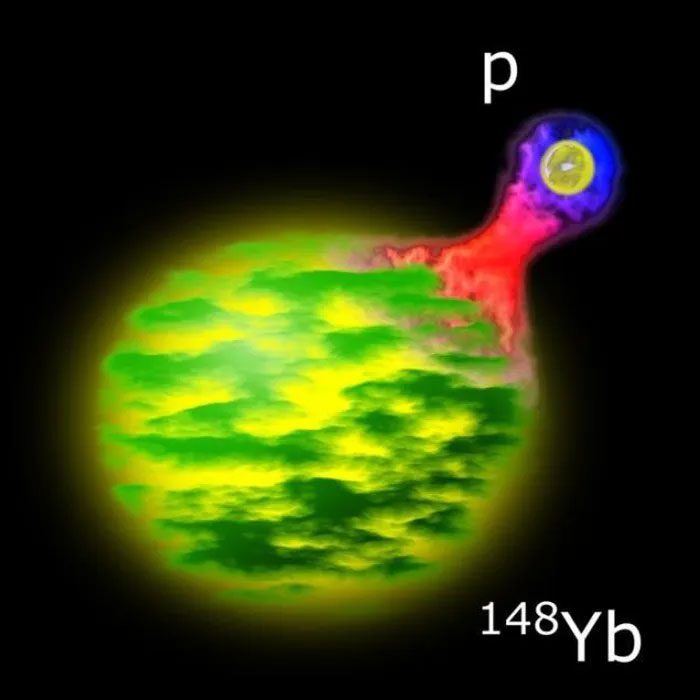Physicists in Finland have created an atomic nucleus shaped like a pumpkin that can produce protons in a rare type of radioactive decay.
The lutetium-149 nucleus has the shortest half-life of any radioactive element group known as proton emitters, according to PhysicsWorld. It loses half of its radioactive activity (decaying into other elements) in just 450 nanoseconds.

Strange pumpkin-shaped nucleus
Lutetium is a rare earth element that naturally occurs as a silver-colored metal with 71 protons and 71 neutrons in its nucleus. It is commonly found alongside the metal element ytterbium in the Earth’s crust.
In the 1980s, scientists observed an isotope of lutetium—a variant of the atom with a different number of neutrons in its nucleus—known as lutetium-151, which decays and ejects a proton from its nucleus while in its ground state. Proton emission is rare, and lutetium-151 was the first isotope observed to emit protons during decay in its stable ground state.
Studying proton decay allows researchers to look inside an atom’s nucleus and understand how protons and neutrons bind together. As part of this research, Kalle Auranen, a postdoctoral researcher in physics at the University of Jyväskylä, and colleagues created a new isotope of lutetium, lutetium-149, which contains 71 protons and 78 neutrons in its nucleus.
They discovered that lutetium-149 is even more peculiar than lutetium-151. Its nucleus is not a neat sphere, but rather an elongated shape that resembles a pumpkin. This phenomenon is referred to as nuclear deformation, and lutetium-149 holds the record for the most distorted nucleus ever measured.
The blink-of-an-eye half-life of lutetium-149 is also significantly shorter than the 80.6 milliseconds half-life of lutetium-151.
The researchers created this isotope by bombarding an isotope of nickel, nickel-58, with an isotope of ruthenium, ruthenium-96, according to PhysicsWorld. The new lutetium isotope decays into ytterbium-148, which itself does not last long: it has a half-life of 250 milliseconds.
According to PhysicsWorld, it is possible to create lutetium-148, which has a slightly longer existence than lutetium-149.





















































